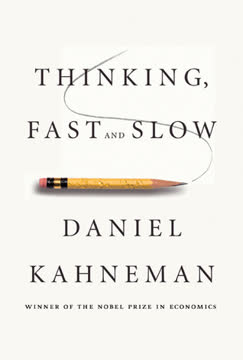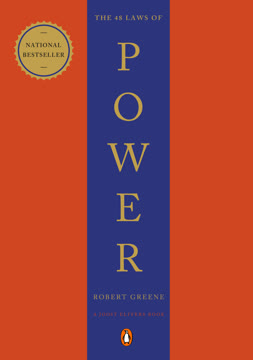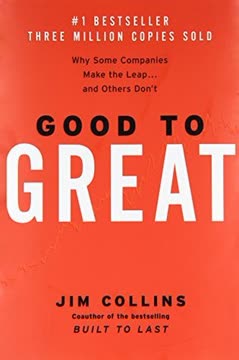Key Takeaways
1. Small habits compound into remarkable results
If you can get 1 percent better each day for one year, you'll end up thirty-seven times better by the time you're done.
Compounding effect. Habits, like compound interest, build on themselves over time. A small improvement of 1% each day doesn't seem significant in the moment, but over the course of a year, it results in a massive 37x improvement. This principle applies to both positive and negative habits.
Consistency is key. The power of habits lies in their consistency, not their individual impact. Making small, easy changes and sticking to them is more effective than attempting large, unsustainable changes. For example:
- Reading one page a day instead of attempting to read an entire book in one sitting
- Doing one push-up a day instead of aiming for an hour-long workout
- Saving a small amount consistently rather than trying to save a large sum sporadically
Long-term perspective. The true impact of habits is often invisible in the short term. Like an ice cube slowly melting, progress may seem imperceptible until a critical threshold is reached. Patience and persistence are crucial for reaping the benefits of good habits.
2. Identity-based habits are more likely to stick
Every action you take is a vote for the type of person you wish to become.
Identity shapes behavior. Instead of focusing solely on outcomes, focus on becoming the type of person who can achieve those outcomes. For example, rather than setting a goal to lose weight, focus on becoming a healthy person who exercises regularly and eats nutritious food.
Habit formation process:
- Decide the type of person you want to be
- Prove it to yourself with small wins
- Reinforce the identity through repeated actions
Examples of identity-based habits:
- "I'm a reader" instead of "I want to read more books"
- "I'm an athlete" instead of "I want to lose weight"
- "I'm a writer" instead of "I want to write a book"
By aligning habits with desired identities, we create a powerful feedback loop that reinforces positive behaviors and makes them more likely to stick.
3. Make habits obvious, attractive, easy, and satisfying
The most effective way to change your habits is to focus not on what you want to achieve, but on who you wish to become.
Four Laws of Behavior Change:
- Make it obvious: Increase visibility of cues that trigger desired habits
- Make it attractive: Associate habits with positive emotions or rewards
- Make it easy: Reduce friction and lower the activation energy required
- Make it satisfying: Provide immediate rewards to reinforce behavior
Application strategies:
- Obvious: Use visual cues, like placing a book on your pillow to read before bed
- Attractive: Pair an enjoyable activity with a necessary one (e.g., listening to podcasts while exercising)
- Easy: Reduce steps needed to start a habit (e.g., sleeping in workout clothes)
- Satisfying: Celebrate small wins and track progress visually
By manipulating these four factors, we can significantly increase the likelihood of forming and maintaining positive habits while breaking undesirable ones.
4. Environment design is crucial for behavior change
You do not rise to the level of your goals. You fall to the level of your systems.
Environment trumps willpower. Our surroundings play a crucial role in shaping our behavior. By designing our environment to make good habits easier and bad habits harder, we can significantly increase our chances of success.
Strategies for environmental design:
- Remove temptations: Keep junk food out of the house
- Make good habits visible: Place fruits on the counter
- Increase friction for bad habits: Unplug the TV after each use
- Decrease friction for good habits: Prepare gym clothes the night before
Context-dependent behavior. Habits are often tied to specific contexts or locations. Changing your environment can help break old habits and form new ones. For example, if you're struggling to write at home, try working in a coffee shop or library.
By consciously shaping our environment, we can make good habits inevitable and bad habits impossible, reducing our reliance on willpower and motivation.
5. The Two-Minute Rule helps build new habits
When you start a new habit, it should take less than two minutes to do.
Start small. The Two-Minute Rule states that any new habit should be scaled down to an action that takes less than two minutes to complete. This approach makes habits feel less daunting and increases the likelihood of getting started.
Examples of applying the Two-Minute Rule:
- "Read before bed each night" becomes "Read one page"
- "Do thirty minutes of yoga" becomes "Take out my yoga mat"
- "Study for class" becomes "Open my notes"
- "Run three miles" becomes "Tie my running shoes"
Gateway habits. These small actions serve as "gateway habits" that lead to the larger behavior you want to adopt. Once you've started, it's easier to continue. The key is to make habits as easy as possible to start, allowing momentum to carry you forward.
By focusing on the first two minutes of a desired habit, we lower the barrier to entry and increase the chances of long-term success. Remember, the goal is not to do one thing, but to master the art of showing up and making habits automatic.
6. Habit stacking leverages existing behaviors
One of the best ways to build a new habit is to identify a current habit you already do each day and then stack your new behavior on top.
Leverage existing habits. Habit stacking involves pairing a new habit you want to form with an existing habit you already perform regularly. This technique takes advantage of the neural networks already established in your brain.
Habit stacking formula: After [CURRENT HABIT], I will [NEW HABIT].
Examples of habit stacking:
- After I pour my morning coffee, I will meditate for one minute
- After I take off my work shoes, I will immediately change into my workout clothes
- After I sit down to dinner, I will say one thing I'm grateful for
- After I get into bed, I will read one page
Creating chains of habits. Once you've mastered one habit stack, you can create larger stacks by chaining small habits together. This allows you to take advantage of the natural momentum that comes from one behavior leading into the next.
By anchoring new habits to existing ones, we increase the likelihood of remembering to perform the new behavior and make the process of habit formation more automatic and effortless.
7. Immediate rewards reinforce habit formation
What is immediately rewarded is repeated. What is immediately punished is avoided.
Immediate vs. delayed gratification. Our brains are wired to prioritize immediate rewards over long-term benefits. To form lasting habits, we need to align our desired behaviors with immediate positive reinforcement.
Strategies for creating immediate rewards:
- Make the benefits of good habits more immediate (e.g., use a savings app that visualizes your progress)
- Make the consequences of bad habits more immediate (e.g., use a website blocker during work hours)
Examples of adding immediate rewards:
- After exercising, reward yourself with a relaxing shower or smoothie
- After completing a work task, take a short break to do something enjoyable
- After saving money, transfer a small amount to a "fun fund"
Shift focus to the process. Instead of fixating on long-term results, find ways to enjoy the process of performing the habit itself. This might involve listening to music while working out or finding a study method that makes learning more engaging.
By providing immediate positive feedback, we can bridge the gap between our present actions and future results, making good habits more appealing and sustainable in the long run.
8. Habit tracking provides visual proof of progress
Don't break the chain. Try to keep your habit streak alive.
Visual feedback. Tracking habits provides clear evidence of your progress and can be intrinsically rewarding. Methods like marking Xs on a calendar or using a habit-tracking app create a visual representation of your consistency.
Benefits of habit tracking:
- Serves as a reminder to act
- Motivates you to continue the streak
- Provides satisfaction upon recording progress
- Offers data for self-reflection and improvement
Implementation strategies:
- Use a physical calendar or journal
- Employ habit-tracking apps or digital tools
- Create a ritual around tracking (e.g., review progress every Sunday evening)
Caution against obsession. While tracking can be powerful, it's important not to become overly fixated on it. The goal is to perform the habit, not to perfect the act of measuring.
By providing tangible evidence of progress, habit tracking can significantly increase motivation and make the habit-formation process more engaging and rewarding.
9. Never miss twice to maintain momentum
Missing once is an accident. Missing twice is the start of a new habit.
Prevent habit streaks from breaking. The "never miss twice" rule acknowledges that perfection is impossible, but emphasizes the importance of getting back on track immediately after a slip-up. This prevents temporary setbacks from becoming permanent derailments.
Strategies for implementing "never miss twice":
- Plan for failure by having a backup strategy ready
- Focus on getting back on track rather than beating yourself up
- Use setbacks as opportunities to refine your approach
Examples:
- If you miss a workout, do a quick 5-minute exercise routine the next day
- If you eat an unhealthy meal, ensure your next meal is nutritious
- If you skip a day of writing, write a single sentence the following day
Maintain the identity. Even if you can't perform the habit fully, do something small that reinforces the identity you're trying to build. This keeps you connected to your goals and prevents the formation of a negative habit streak.
By adopting the "never miss twice" mindset, we can maintain momentum and consistency in our habit formation efforts, even in the face of occasional setbacks.
10. Talent is overrated; focus on your unique strengths
Genes do not eliminate the need for hard work. They clarify it. They tell us what to work hard on.
Play to your strengths. While genetics play a role in our capabilities, they don't determine our destiny. The key is to identify areas where your natural inclinations align with your goals and focus your efforts there.
Strategies for leveraging your strengths:
- Experiment with different activities to discover what comes naturally
- Pay attention to tasks that energize rather than drain you
- Seek feedback from others about your perceived strengths
Creating your niche. Instead of competing in overcrowded fields, look for ways to combine your unique set of skills and interests. This approach can lead to the creation of a personal niche where you have a natural advantage.
Continuous improvement. Even in areas where you have natural talent, consistent practice and deliberate effort are crucial for mastery. The goal is to use your genetic predispositions as a starting point, not a limitation.
By focusing on areas where we have natural strengths and interests, we can achieve higher levels of performance and satisfaction in our habit-forming efforts. This approach allows us to work with our biology rather than against it, making success more likely and enjoyable.
Last updated:
FAQ
What's "Atomic Habits" about?
- Book Overview: "Atomic Habits" by James Clear is a guide to understanding and changing habits through small, incremental changes. It emphasizes the power of tiny habits and how they can lead to significant improvements over time.
- Core Concept: The book introduces the idea of "atomic habits," which are small habits that are part of a larger system, much like atoms are the building blocks of molecules.
- Goal: The aim is to help readers build good habits, break bad ones, and master the tiny behaviors that lead to remarkable results.
Why should I read "Atomic Habits"?
- Practical Advice: The book offers actionable strategies for habit formation and behavior change, making it useful for anyone looking to improve their personal or professional life.
- Scientific Backing: James Clear combines insights from biology, neuroscience, and psychology to provide a well-rounded understanding of how habits work.
- Long-term Impact: By focusing on systems rather than goals, the book helps readers create sustainable changes that last a lifetime.
What are the key takeaways of "Atomic Habits"?
- Four Laws of Behavior Change: The book outlines four laws for creating good habits: make it obvious, make it attractive, make it easy, and make it satisfying.
- Systems Over Goals: Clear emphasizes the importance of focusing on systems rather than goals, as systems are more effective for long-term success.
- Identity and Habits: The book highlights the connection between identity and habits, suggesting that true behavior change is identity change.
How does James Clear define "atomic habits"?
- Small Changes: Atomic habits are small, incremental changes that compound over time to produce significant results.
- Building Blocks: They are the fundamental units of a larger system of habits that drive behavior change.
- Manageable Progress: By focusing on these tiny habits, individuals can make meaningful progress without feeling overwhelmed.
How do the Four Laws of Behavior Change work in "Atomic Habits"?
- Make It Obvious: This involves designing your environment to make cues for good habits more visible and cues for bad habits less noticeable.
- Make It Attractive: By associating habits with positive emotions or rewards, you increase the likelihood of sticking with them.
- Make It Easy: Simplifying habits to reduce friction makes them easier to start and maintain.
- Make It Satisfying: Providing immediate rewards or satisfaction helps reinforce the habit loop, making it more likely to be repeated.
What is the "Two-Minute Rule" in "Atomic Habits"?
- Rule Explanation: The Two-Minute Rule suggests that when you start a new habit, it should take less than two minutes to do.
- Purpose: This rule helps overcome procrastination by making the habit so easy to start that it becomes almost automatic.
- Long-term Strategy: Once the habit is established, you can gradually scale it up to achieve more significant goals.
How does "Atomic Habits" suggest breaking bad habits?
- Make It Invisible: Reduce exposure to cues that trigger bad habits by altering your environment.
- Make It Unattractive: Reframe your mindset to highlight the negative aspects of the bad habit.
- Make It Difficult: Increase the friction or effort required to perform the bad habit.
- Make It Unsatisfying: Introduce immediate consequences or remove rewards associated with the bad habit.
What role does identity play in habit formation according to "Atomic Habits"?
- Identity-Based Habits: The book suggests focusing on the type of person you want to become rather than the outcome you want to achieve.
- Belief and Behavior: Your habits are a reflection of your identity, and changing your identity can lead to lasting behavior change.
- Two-Step Process: Decide the type of person you want to be and prove it to yourself with small wins.
How does "Atomic Habits" address motivation and willpower?
- Motivation is Overrated: The book argues that environment often matters more than motivation in shaping behavior.
- Design for Success: By designing your environment to make good habits easier and bad habits harder, you reduce the need for willpower.
- Self-Control as a Short-term Strategy: The book suggests that relying on self-control is not sustainable and that optimizing your environment is more effective.
What is the "Plateau of Latent Potential" in "Atomic Habits"?
- Concept Explanation: The Plateau of Latent Potential refers to the period where you don't see immediate results from your efforts, but progress is being made beneath the surface.
- Importance of Patience: The book emphasizes the need for patience and persistence, as significant results often come after a period of apparent stagnation.
- Breakthrough Moments: These moments occur when accumulated efforts finally lead to visible results, similar to an ice cube melting at 32 degrees.
What is the "Goldilocks Rule" mentioned in "Atomic Habits"?
- Peak Motivation: The Goldilocks Rule states that humans experience peak motivation when working on tasks that are right on the edge of their current abilities.
- Avoiding Extremes: Tasks that are too easy or too difficult can lead to boredom or anxiety, respectively.
- Optimal Challenge: By finding the right level of challenge, individuals can maintain motivation and achieve a state of flow.
What are some of the best quotes from "Atomic Habits" and what do they mean?
- Systems Over Goals: "You do not rise to the level of your goals. You fall to the level of your systems." This emphasizes the importance of having effective systems in place to achieve success.
- Compound Interest of Habits: "Habits are the compound interest of self-improvement." This highlights how small, consistent habits can lead to significant improvements over time.
- Identity and Actions: "Every action you take is a vote for the type of person you wish to become." This underscores the idea that your daily actions shape your identity and future.
Review Summary
Atomic Habits receives mostly positive reviews for its practical approach to habit formation. Readers appreciate Clear's framework of making habits obvious, attractive, easy, and satisfying. Many find the book engaging and life-changing, praising its actionable advice and scientific backing. Some critics argue the content is unoriginal or oversimplified. The book's emphasis on small, consistent changes resonates with many readers. While some find it repetitive, others value its straightforward presentation and real-life examples. Overall, it's widely recommended for those seeking personal development and behavior change.
Similar Books







Download PDF
Download EPUB
.epub digital book format is ideal for reading ebooks on phones, tablets, and e-readers.






